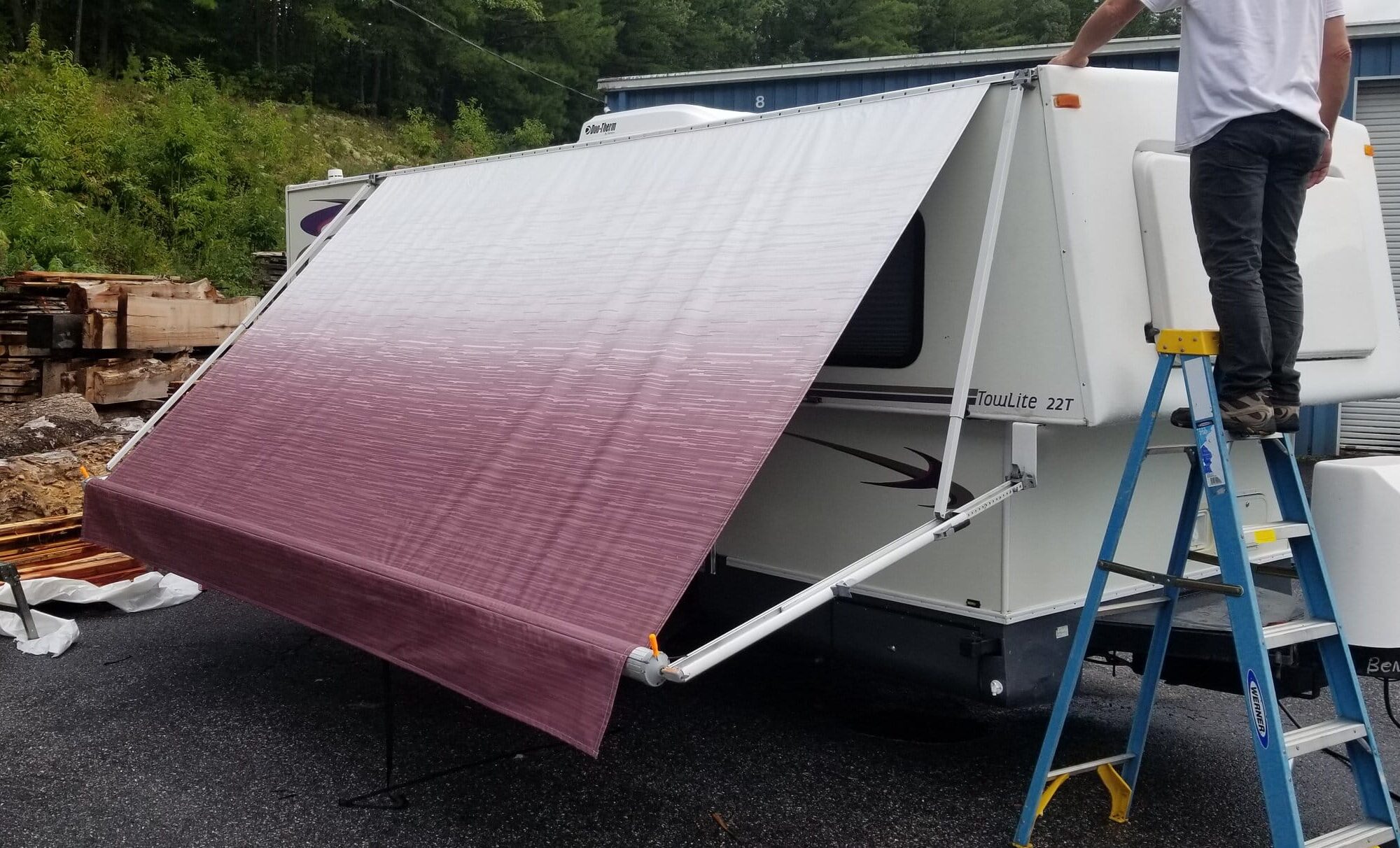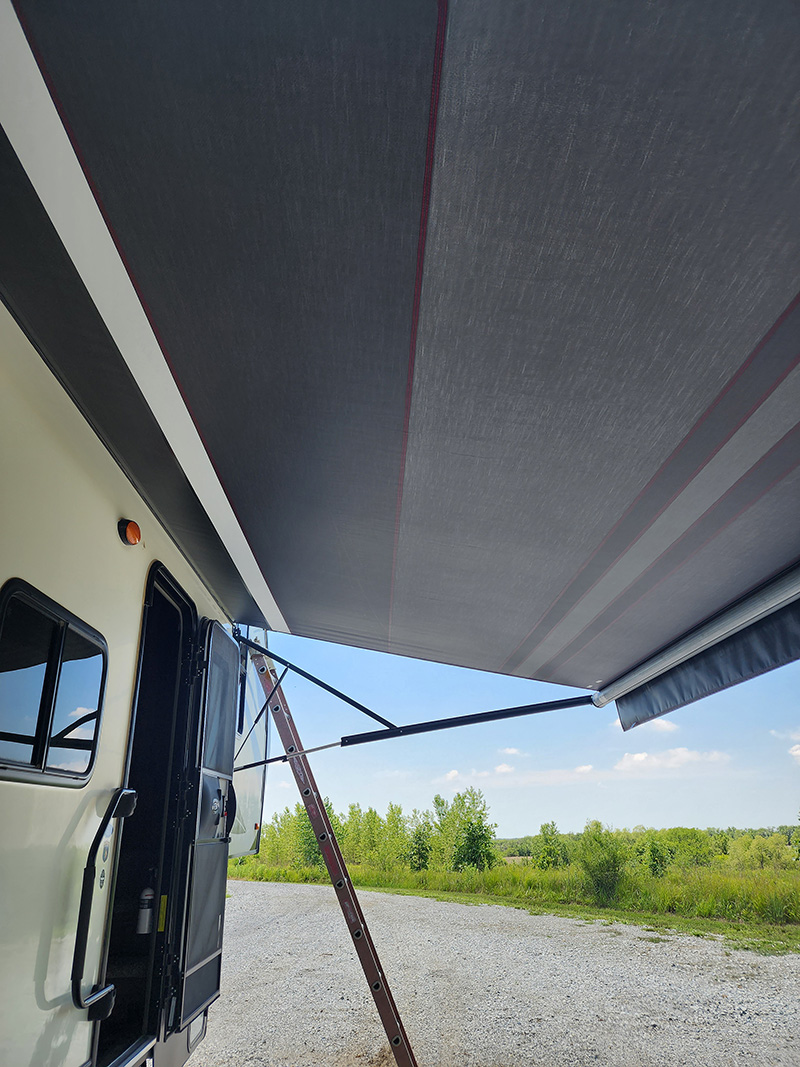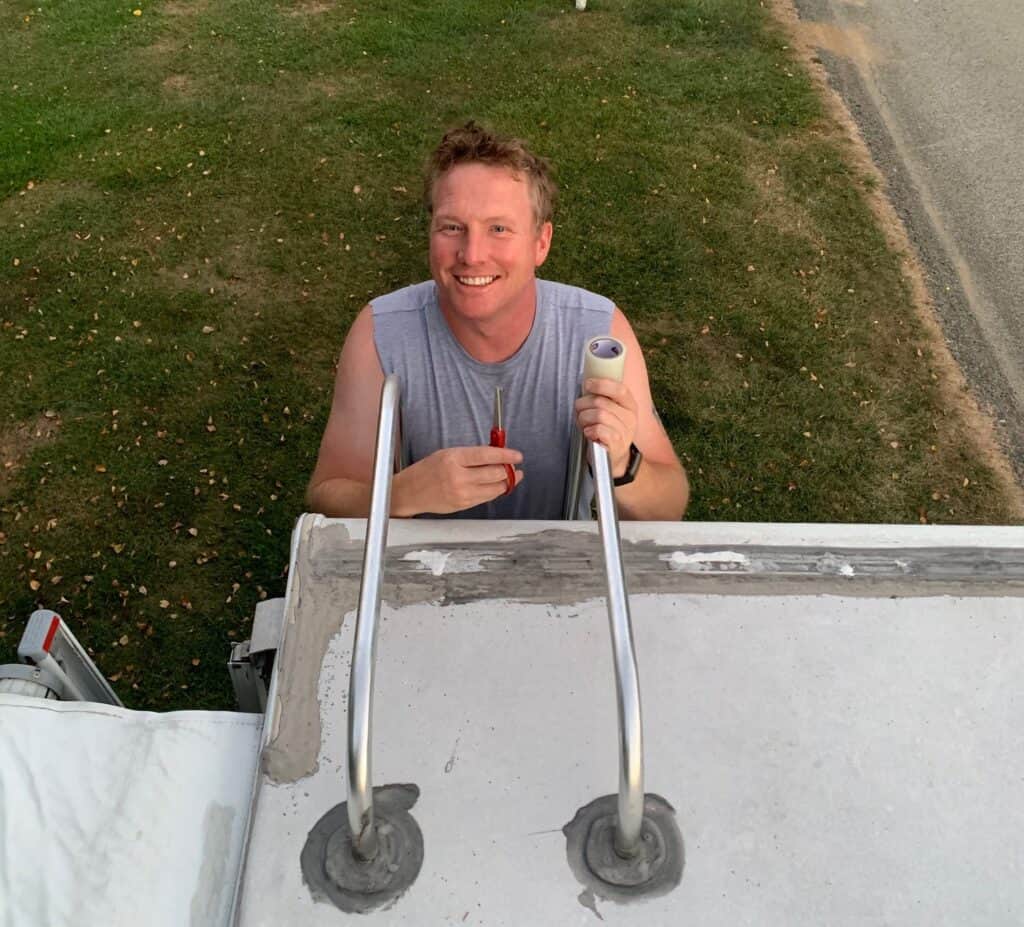All Categories
Featured
Table of Contents
- – Camper Roof Repair Mira Loma, CA
- – OCRV Center
- – Camper Awning Replacement Mira Loma, CA
- – Camper Trailer Repair Near Me Mira Loma, CA
- – Camper Repair Shops Near Me Mira Loma, CA
- – Camper Services Mira Loma, CA
- – Camper Awning Replacement Mira Loma, CA
- – Pop Up Camper Canvas Repair Mira Loma, CA
- – Camper Repair And Service Mira Loma, CA
- – Camper Repair Near Me Mira Loma, CA
- – Rv Camper Ac Repair Mira Loma, CA
- – Camper Roof Replacement Mira Loma, CA
- – Camper Service Center Mira Loma, CA
- – OCRV Center
Camper Roof Repair Mira Loma, CA
Many campers around us had their awnings released. We returned home yesterday in the rainfall, so today I released the awnings to dry them out.
It appears that about 18 to 24 inches of the steel extrusion (rainfall seamless gutter) that the awning is slid right into has retreated from the wall and twisted a little bit - Camping Repair Near Me Mira Loma. I'm thinking the repair service will entail replacing that entire length of gutter (10 feet?) and possibly using bigger scale screws to change those that were taken out
We've got broken braces on our camper awning. 2 months earlier, we had a negative tire blow-out that triggered a curved axle, major repairs, etc, and we question if the brackets cracked/broke throughout the bouncy adventure prior to we recognized the axle remained in difficulty. We have not had the awning out because it was in the shop to be repaired.
Camper Awning Replacement Mira Loma, CA
The awning itself, spring system, etc, is great. The back bracket assembly is great, however the front one is broken at the base and completely broken through at the top, so that the top assistance arm no longer affixes to the camper. We remain in difficulty. I do not want/like to camp without it.
Even the actual assistance arms are intact. They are white metal (? The real arms are totally normal/functionalI'm simply desiring to make sure we're not being taken in out of our despair (Camping Repair Near Me Mira Loma).
Camper Trailer Repair Near Me Mira Loma, CA
The RV is a 2007, but we had rainfall damages in 2010 and the whole awning was brand brand-new at that time. If absolutely nothing else, we would such as recommendations as to exactly how we can "jerry gear" this for a while - possibly even obtain us with the summertime - without having to put in a brand new awning!
If we have to go awning-less, we will, however I prefer to locate a fast and efficient service. Any individual? Please!.
Invite to my RV Remodelling Series!.?.!! I get on step 5 of changing the roof of my '93 Fleetwood Jamboree Searcher motorhome. In the last action I got rid of the roofing system trim molding from three sides of the roofing. But in order to eliminate the 4th one, I require to eliminate the RV awning too.
In order to replace the rubber roofing system and roofing outdoor decking, I require to remove the awning. My motor home awning has legs which pivot at the base however can be gotten rid of to establish on the ground. I drew these out. Pushing this lever releases the foot of the awning legs.
Camper Repair Shops Near Me Mira Loma, CA
You'll also observe just how the bracket is hooked on top of the trim molding that holds back the fiberglass panel in the back edge. That's why the awning requires ahead off initially before the last actions of this message (subjecting the front and back sides of the roofing system decking).
Here's a detail of how the awning mounting braces are screwed right into the camper. I really did not actually have to do this action until the awning got on the ground yet I observed this set screw below holding the awning canvas right into the awning rail (there's one more at the ideal end of the awning.) I went on and loosened it.
Once both screws are gotten rid of, just draw back on the brace. Unscrewing the large lag screws that hold the motor home awning placing brackets to the camper (with an outlet wrench) Getting rid of the installing brace once the lag screws have been unscrewed. Note exactly how this end was hooked over the termination bar that secures the spherical corner at the back of the roofing.
Both lag screws removed from the awning installing brace on the right. Getting rid of the placing bracket of the awning. Once the placing brackets are detached, it's time to get rid of the awning rail. Keep in mind, the awning rail is primarily similar to a normal piece of aluminum roof edge trim molding except that near the bottom edge there is a round track with a slot in it.
Camper Services Mira Loma, CA
To replace the roof covering, this awning bar needs to be eliminated. If you're simply replacing your awning and not repairing the entire roofing system like me, after that you would not need to remove the awning rail.
Going down the legs a few notches to reduce the entire awning. Now I can reach this trim molding (the awning rail) quickly.
You might have to cut the end with an utility blade if it is covered under. Simply yank it out!
When the screws were out I began spying up the awning rail. As soon as I started to tear off the awning rail, the entire thing all of a sudden snapped off and rolled up into the awning like a window blind.
Camper Awning Replacement Mira Loma, CA
Once the screws are eliminated, the awning rail can be torn up. As soon as you start drawing the awning rail away it will all of a sudden snap free and roll up like a window blind with the awning.
This point is hefty so if you're functioning alone like me then reduce it the ground gradually by walking the legs far from the camper on each side one by one up until you can lay it on the ground. I flipped the legs back up and out of the method against the camper.

These screws maintain the awning canvas from sliding in the rail. Once they're removed the rail simply slides right off the canvas by sliding the whole rail to one side.
Pop Up Camper Canvas Repair Mira Loma, CA
When the 2 set screws were removed I could slide the whole awning rail right off the awning. One more look at the profile of this trim molding (the awning rail) after it was gotten rid of.
The following point holding down the recreational vehicle fiberglass exterior siding panels is the edge trim molding shown below. It has a plastic screw cover strip placed, so again I simply tore up the plastic insert and drew out enough so I can unscrew some screw heads.
I may end up eliminating it later if I need to replace the luan plywood below this fiberglass shift. To raise that, the edge molding must be gotten rid of.
I might turn the trim mold and mildew off the side enough to lift up the side of the fiberglass panel. Once I can turn that item of edge molding off the side, I started to tear up the fiberglass panel. It has glue under it and bits of rusted staples and sheared off screws still holding it in position.
Camper Repair And Service Mira Loma, CA
I switched over from a scrape to a tight 6 large putty knife. This piece broke out of the fiberglass panel when I was attempting to pry it up. At that factor I switched from a scraper to 6 inch broad taping knife. I loosened the various other corner trim in the exact same way, and curved it sidewards just enough so that I could raise up the side of the fiberglass panel.
I discovered a lot of water damage in the plywood under the fiberglass panel so I'll most likely be changing it. I had a substantial quantity of water damage in the joint between the rounded edge and the roof deck.
Camper Repair Near Me Mira Loma, CA
The edge of the roofing decking is revealed at the back of the camper! I have actually subjected the roof substratum at the back side of the camper. Currently its time to find the front edge.
Once more, I pried that layer up also (there wasn't much holding it down but adhesive at this moment) and then I might yank out the remainder of the rubber roof that was glued beneath it. Currently I can take out the last little bit of rubber roof covering from below the fiberglass and luan plywood.
Rv Camper Ac Repair Mira Loma, CA
I discovered there were no bolts holding the roofing plywood down. I could see the blue styrofoam insulation underneath the damaged locations of luan plywood on the roof. Notification there are no bolts at all holding down the roofing system plywood!
Once I scuffed up some of the busted bits I got hold of a strong piece of plywood and began to pull. The entire point started to pull up cleanly in one piece without damaging the foam board insulation at all.
There is a metal reinforced tape on the bottom that signs up with the pieces together. I don't recognize just how precisely they managed to adhesive everything down so well and get this tape joining them from the underside, however it was nicely done. The pieces of roof ply are collaborated at the joints beneath with a metal-reinforced tape.
Camper Roof Replacement Mira Loma, CA
I swiftly realized the roofing was shedding toughness and tightness as I brought up the leading layer, so fractured it off just before the first seam. A close up of the steel framework in the roofing: one inch wide, one and a half inches high. Below's an information of the electrical wiring in the insulation foam and the solid wood supports where the antennas screw into the roofing.

I discovered a bunch of water damages in the plywood under the fiberglass panel so I'll most likely be changing it. I had a substantial amount of water damages in the joint between the rounded edge and the roofing system deck.
It's simply popping through the staples. Finally the side of the roof decking is revealed at the rear of the camper! OK! So I have actually exposed the roofing substratum at the back edge of the camper. Now its time to locate the leading edge. Exact same deal once again. Remove some screws from the edge trim holding back the fiberglass panel.
Again, I tore that layer up too (there wasn't much stifling yet adhesive now) and after that I could pull out the rest of the rubber roofing that was glued beneath it. Camping Repair Near Me Mira Loma. Currently I can take out the last little bit of rubber roofing from beneath the fiberglass and luan plywood
Camper Service Center Mira Loma, CA

I observed there were no bolts holding the roof plywood down. I could see the blue styrofoam insulation under the damaged areas of luan plywood on the roofing. Notice there are no bolts at all holding down the roof covering plywood!
As soon as I scraped up some of the broken little bits I got hold of a solid piece of plywood and started to draw. The whole point began to draw up easily in one piece without damaging the foam board insulation at all.
There is a steel enhanced tape under that joins the assemble. I don't understand just how specifically they took care of to glue every little thing down so well and get this tape joining them from the bottom, yet it was well done. The items of roof ply are collaborated at the joints underneath with a metal-reinforced tape.
I rapidly recognized the roof was shedding stamina and stiffness as I drew up the leading layer, so broke it off prior to the initial seam. A close of the steel framing in the roof covering: one inch wide, one and a fifty percent inches high. Here's a detail of the circuitry in the insulation foam and the strong timber supports where the antennas screw right into the roof covering.
Rv Camper Repair Near Me Mira Loma, CAPop Up Camper Canvas Repair Mira Loma, CA
Camper Service Mira Loma, CA
Camper Repair Places Near Me Mira Loma, CA
Camper Service Near Me Mira Loma, CA
Camper Repair Mira Loma, CA
Camper Service Mira Loma, CA
Pop Up Camper Repair Near Me Mira Loma, CA
Rv Camper Repair Mira Loma, CA
Camping Repair Near Me Mira Loma, CA
Camper Repair Mira Loma, CA
Camper Repair Shop Mira Loma, CA
Pop Up Camper Repair Near Me Mira Loma, CA
Camper Repair Mira Loma, CA
Camper Repair Shop Mira Loma, CA
Pop Up Camper Repair Mira Loma, CA
Camper Trailer Repair Mira Loma, CA
Rv Camper Repair Near Me Mira Loma, CA
Camper Service And Repair Mira Loma, CA
Camper Repair Mira Loma, CA
Camper Awning Replacement Mira Loma, CA
Camper Awning Replacement Mira Loma, CA
Camper Roof Repair Near Me Mira Loma, CA
Camper Trailer Service Near Me Mira Loma, CA
Camper Air Conditioner Repair Near Me Mira Loma, CA
Rv Camper Repair Near Me Mira Loma, CA
Camper Services Mira Loma, CA
Camper Trailer Repair Near Me Mira Loma, CA
Pop Up Camper Roof Repair Mira Loma, CA
Camper Repair Mira Loma, CA
Camper Repair Shop Near Me Mira Loma, CA
Pop Up Camper Roof Repair Mira Loma, CA
Camper Repair Shop Near Me Mira Loma, CA
Camper Roof Repair Mira Loma, CA
Camper Trailer Service Near Me Mira Loma, CA
Camper Service Mira Loma, CA
Camper Air Conditioner Repair Near Me Mira Loma, CA
Camper Repair Mira Loma, CA
Rv Camper Repair Near Me Mira Loma, CA
Camper Service Near Me Mira Loma, CA
Camper Service And Repair Mira Loma, CA
Camping Repair Near Me Mira Loma, CA
Camper Air Conditioner Repair Near Me Mira Loma, CA
Rv Camper Repair Mira Loma, CA
Camper Air Conditioner Repair Near Me Mira Loma, CA
Pop Up Camper Roof Repair Mira Loma, CA
Camper Repair And Service Mira Loma, CA
Camper Repair Near Me Mira Loma, CA
Pop Up Camper Repair Near Me Mira Loma, CA
Camper Service Mira Loma, CA
Camper Repair Shops Near Me Mira Loma, CA
Pop Up Camper Roof Replacement Mira Loma, CA
Camper Services Mira Loma, CA
Pop Up Camper Roof Replacement Mira Loma, CA
Pop Up Camper Roof Replacement Mira Loma, CA
Pop Up Camper Roof Repair Mira Loma, CA
Camper Trailer Repair Mira Loma, CA
Camper Roof Repair Near Me Mira Loma, CA
Pop Up Camper Canvas Repair Mira Loma, CA
Camper Service Center Mira Loma, CA
Pop Up Camper Roof Replacement Mira Loma, CA
Camper Awning Repair Mira Loma, CA
Camper Repair Mira Loma, CA
Camper Awning Replacement Mira Loma, CA
Camper Repair Shop Mira Loma, CA
Camper Trailer Repair Mira Loma, CA
Pop Up Camper Roof Repair Mira Loma, CA
Camper Repair Mira Loma, CA
Camper Roof Repair Near Me Mira Loma, CA
Camper Air Conditioner Repair Near Me Mira Loma, CA
Camper Trailer Repair Near Me Mira Loma, CA
Camper Air Conditioner Repair Near Me Mira Loma, CA
Camping Repair Near Me Mira Loma, CA
Camper Awning Repair Mira Loma, CA
Camper Awning Repair Mira Loma, CA
Camper Service Mira Loma, CA
Camper Service Center Mira Loma, CA
Camper Service And Repair Mira Loma, CA
Local Seo Company Mira Loma, CA
Finding A Local Seo Firm Mira Loma, CA
OCRV Center
Table of Contents
- – Camper Roof Repair Mira Loma, CA
- – OCRV Center
- – Camper Awning Replacement Mira Loma, CA
- – Camper Trailer Repair Near Me Mira Loma, CA
- – Camper Repair Shops Near Me Mira Loma, CA
- – Camper Services Mira Loma, CA
- – Camper Awning Replacement Mira Loma, CA
- – Pop Up Camper Canvas Repair Mira Loma, CA
- – Camper Repair And Service Mira Loma, CA
- – Camper Repair Near Me Mira Loma, CA
- – Rv Camper Ac Repair Mira Loma, CA
- – Camper Roof Replacement Mira Loma, CA
- – Camper Service Center Mira Loma, CA
- – OCRV Center
Latest Posts
Exterior House Cleaning Services [target:city]
Pressure Washer Companies Chino Hills
Yorba Linda Pressure Washer Services Near Me
More
Latest Posts
Exterior House Cleaning Services [target:city]
Pressure Washer Companies Chino Hills
Yorba Linda Pressure Washer Services Near Me